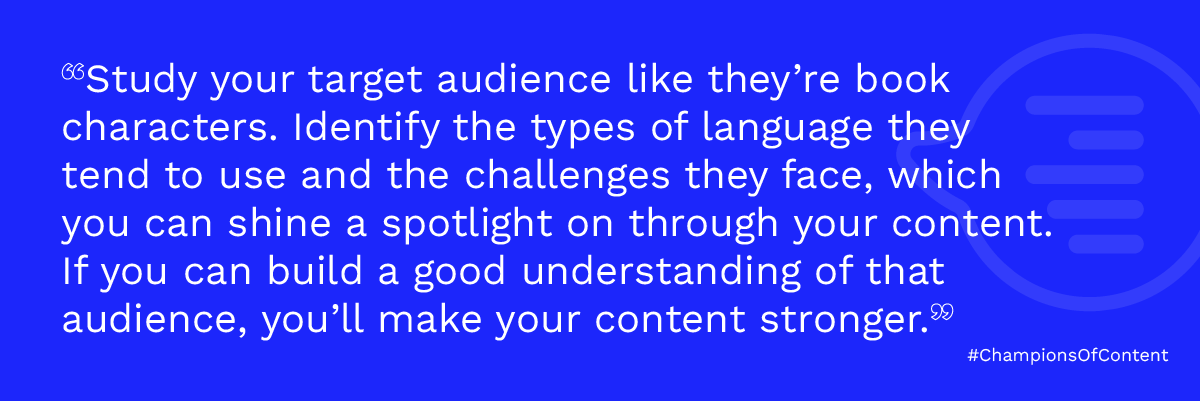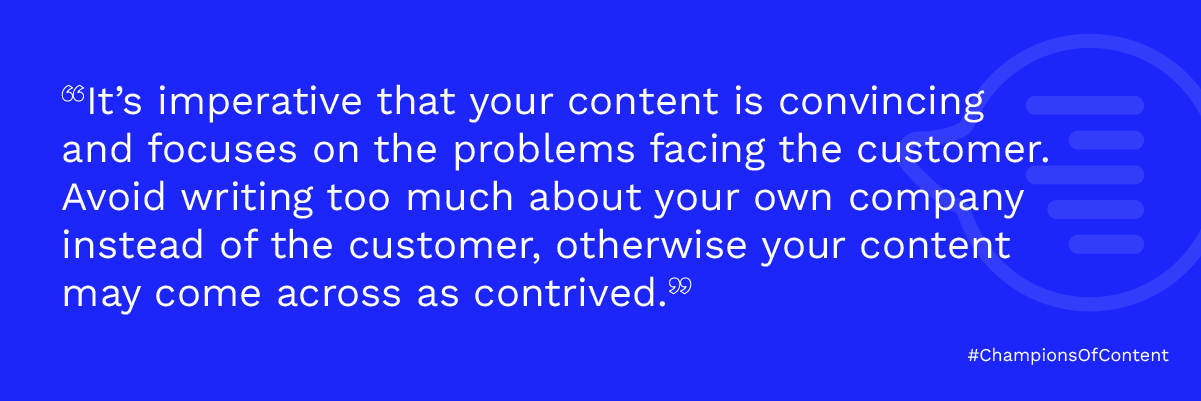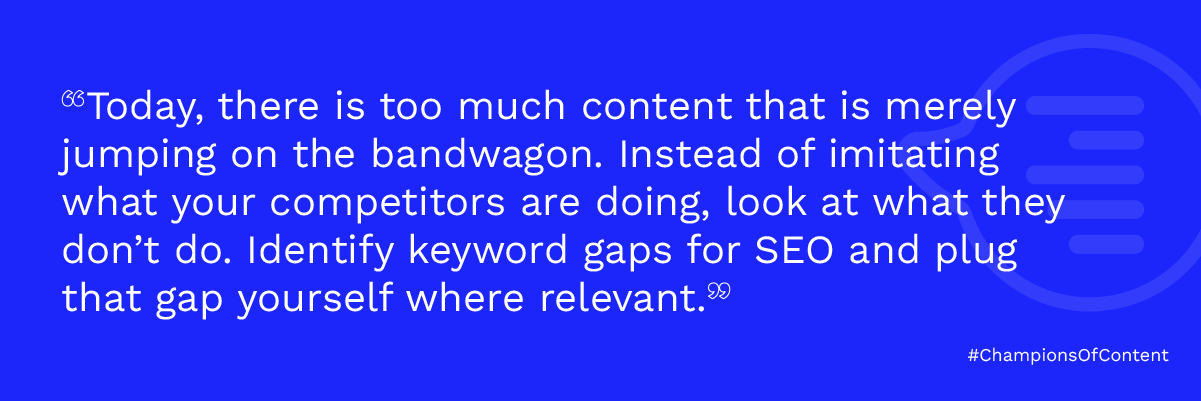Champions of Content – Q&A with Rosella Dello loio: Head of Content at Enate
Welcome to the next instalment of our new series: Champions of Content.
Content is integral to the way brands are understood and seen by their audiences, but developing content for different audiences, on different channels and even in different languages can be very complicated to get right.
In Champions of Content, we’ll be speaking to passionate content creators we admire including marketers, journalists, writers, podcasters, and speakers about their experiences and sharing the wisdom to help others on their own content journey – whether your first putting pen to paper or looking to level up your content strategy.
Rosella Dello Ioio has spent more than a decade writing content in the PR and marketing industry. From working across the fashion, technology, and travel sectors, to creating comms for pet food and coffee brands. She was formerly the head of content for Relo, the direct-to-consumer ecommerce solution helping global DTC brands to scale and grow. Currently, she is the head of content for Enate, a platform helping companies to organise their operations and business workflows.
In this conversation, Rosella discusses her career, why brands need a strong purpose, and the importance of creating evergreen content.
Rosella, please can you start by telling us about your own career journey as it relates to content and what role content plays in your work today?
I spent my childhood with my head in a book, and always knew I wanted to work with words. In my teenage years, I had lofty ambitions of becoming an editor-in-chief for a glossy fashion magazine, but by the time I graduated print was drying up and even the titles I’d interned at were shutting down. I learnt that copywriting was a route to working with words and getting paid; the rest is history.
My career started in Prague, where I interned at an advertising agency called Brando. After this, I got my first agency job in Cardiff for Liberty as a copywriter. Although I’ve worked in content for over a decade, this role is where I really learned the trade. By writing across 13 industries, from handbags to fascia boards and government policy, as well as receiving harsh client feedback, learning multiple tones of voice, and developing SEO skills, I ultimately became a decent copywriter.
Since then, I’ve worked my way up the ladder through several in-house roles across industries including pets, speciality coffee and now technology. Whichever industry you work in, the content principles are the same:
- Find out the customer’s problem and solve it with content.
- Build content for different stages of the sales funnel including informative, educational content about your product and industry.
- Once the customer has the intent to buy and they’re in your database, you’ll also need content to convince them. Nurture the relationship through email content, videos, tutorials, and so on.
- Test, learn, and iterate to discover what content works best for your audience.
Finally, study your target audience like they’re book characters. Learn about how they spend their time, what keeps them up at night, and what they like to do. Identify the types of language they tend to use and the challenges they face, which you can shine a spotlight on through your content. If you can build a good understanding of that audience, you’ll make your content stronger.

Whose content (brands or individuals) do you admire most and why?
Hiut Denim. They started off as a tiny company making jeans in Cardigan, West Wales, and have grown to the point that Meghan Markle wears them. They’ve stuck to their ethos of “do one thing well” – in their case, it’s producing sustainably-made jeans that stand the test of time. David Hieatt, the founder, is a mastermind in marketing and copy.
I also love Tony’s Chocolonely and everything they stand for. They have a strong purpose and are not afraid to ruffle feathers. A few years ago, they took on the massive chocolate brands with their Sweet Solutions campaign. They released products mimicking their competitors’ branding to draw attention to illegal child labour in chocolate supply chains. I love how they stand up for what they believe in, are not afraid to be confrontational, and are consistently creative in their execution.
Brands like these two, which have a strong purpose and don’t follow the grain, are like gold dust in today’s market.
We all want our content to stand out, what do you think are the main ingredients that make one piece of content stand out above another?
Many things go into the making of a good piece of content, but a few things stand out. You need a good, well-researched idea for your content, that is original and not copying what someone else is doing. Your brand needs a cracking tone of voice that is clear and consistent in your content. Ideally, focus on producing evergreen content, rather than flash-in-the-pan ideas that will soon be irrelevant.
Also, great content reflects the purpose and spirit of the brand. Obviously, this is easier for some to do than others. If you’re on a mission to disrupt the coffee or jeans industry, that’s much easier to communicate as everyone buys jeans and most people eat chocolate. In comparison, my current role in tech is much more niche. We’re trying to solve a specific B2B problem targeted towards Operational and Transformation leaders. In this case, it’s important to solve the problem, but you’re not going to embolden huge parts of society so need a different strategy.
Instead, you need to connect your purpose back to the customer. You need to get into their head, think about the problem they’re facing, and find ways to show your purpose around fixing that problem for them.
On that note, it’s imperative that your content is convincing and focuses on the problems facing the customer. Avoid writing too much about your own company instead of the customer, otherwise your content may come across as contrived. Of course, if a brand publishes a piece of content, the reader is smart enough to know they are trying to sell something, but there is always a way to talk organically about a problem and how you can help solve it.

Involving partners or customers in your content helps make it more convincing, as they add another point of view and balance. This will make your content more well-rounded. Imagine if you walk into a store and the shopkeeper recommends a product, versus your friends recommending it to you; you’re more likely to trust the people that you know. Also, having these partners talk about you through their channels helps your content be seen; they amplify your voice. For Enate, we’re currently developing a playbook featuring 12 industry voices sharing their views on the future of innovation. By involving people outside the brand, the reach and diversity of the audience is likely to be much richer.
Finally, your visuals and branding need to be on-point, and each piece of content needs a clear call-to-action (CTA). Ultimately, there must be a need for your content. If it’s been done or said before, your content needs to have an extra somethin’ somethin’ to set it apart.
What are some of the challenges you face when producing content for different channels and audiences, and how do you deal with these? Here at Tyto, we often navigate the complexity of developing content for different audiences in different countries.
One challenge is that changes to social media algorithms is making it more difficult for social content to be seen. When posts are only being shown to a fraction of followers, it can be a bit demotivating. That’s why it is so important to involve partners in your content: the more you can have other people talking about you, the better chance your content has of being seen.

The sheer volume of content and competition also presents a growing issue. Back in the days when Mad Men was set, there were fewer players in the market, so it was easier to get a message across. Nowadays, there is so much white noise out there, and every market is saturated. That’s why your content needs to stand out and be distinctive, but standing out in a crowded market while staying on brand can be tricky.
Are you excited by AI and ChatGPT, and if so where do you see the greatest potential to harness it in the development of content, now or in the future?
I’m excited by how this technology is evolving and the opportunity to make certain areas of work more efficient: namely proof-reading, admin tasks and idea generation.
Regarding end-to-end content creation, I’m on the fence. I fear it will make us lazier as society, particularly those in school and university education who form critical thinking skills when writing essays. There’s also a question of ethics: just because a computer may be able to create as well as a human, it doesn’t mean it should. The societal impact for humans could be massive, while the impact for AI is low, because it’s a computer. As with all automations, humans need to be kept in the loop to ensure things run smoothly, and I hope this will remain the case for AI and content.
For brands or individuals planning to level up their content in 2023, what would be your top three bits of advice for how they can increase the impact of their content?
One, as mentioned above, focus on partner-led content where possible. Two brands are better than one: featuring more than one voice and perspective in your work makes your content engine stronger, leads to more balanced content and is gold dust for social media promotion.
Two, look for gaps in the market. Today, there is too much content that is merely jumping on the bandwagon. Instead of imitating what your competitors are doing, look at what they don’t do. Identify keyword gaps for SEO and plug that gap yourself where relevant.
Three, focus on case studies, testimonials, and user research. The more you understand your customer and can promote their words about your business, the better. Someone once told me that “bigging up your own business is like sticking a poster on your bedroom wall” and it’s so true. Good words about your business should come from others.

Finally, how do you measure the success of your content?
Firstly, data. The numbers don’t lie. Time on page, click-through rate and site visits are all metrics we’d track.
Secondly, how evergreen is the content? Will it stay relevant in six months, a year, or two years later? If not, how can we change that.
Making content evergreen is important for the perception of your brand. Even if an older piece of content is driving traffic, it could be doing you more harm than good if it contains broken links, poor copy or errors. You need to review your older content to ensure it is still hitting the right messages and visually looks good, with no broken images or formatting problems. Done right, evergreen content can deliver a positive impact over the long term.
Thirdly, conversion to CTA. Is your CTA getting readers to perform the action you want?
In my opinion, content is never ‘done.’ If the content is ranking well, then keep revisiting it. Make the visuals better, add more relevant content, fix the bounce rate, and ask for contribution from partners. Can you add audio or video? The list of options goes on. Content can always be refreshed and repositioned.
However, one valuable thing I have learned is to not spend too long on your content. Don’t spend months trying to perfect something before publishing it. Think of it as an experiment and turn it around quickly. If it starts to perform well, then look to improve it.












